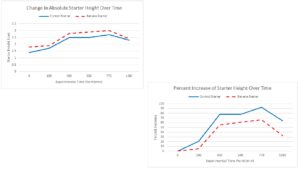This week I decided it was probably time to toss my sourdough starters out. They had served their experimental purpose, but I was definitely saddened to be finished with them.
The DNA of our starters are being sequenced this week because we are trying to determine exactly what types of microbes are growing in the starters. We want to know if there’s yeast, bacteria, or both and what species of microbes they are. The end goal of the class project is to see if different fruits have different microbes on them and if they alter the starters, which would help to explain the cultural variations of bread in whatever region these fruits are grown in.
Before this class I knew a bit about DNA sequencing from prior work in a plant genetics lab. I have actually used PCR, Gel Electrophoresis and Sanger in the lab to isolate DNA. However, I don’t believe I’ve ever heard of NGS before.
The fundamental principles of Sanger and NGS are very similar, but the primary difference in the two methods is the volume of sequencing data during one run. NGS can sequence so much data because a “library” of DNA data must be created before so that it can be referenced.
The technology used for NGS is Illumina. From what I briefly gathered this technology appears to work by having sequences attach to other complimentary sequences as they move through a flow cell. Once a sequence binds it is amplified over and over again. Nucleotide bases are added one at a time and have fluorescent tags so each base pair emits a fluorescence which can be read by a computer program to determine the DNA sequence.
https://www.thermofisher.com/us/en/home/life-science/sequencing/sequencing-learning-center/next-generation-sequencing-information/ngs-basics/what-is-next-generation-sequencing.html

